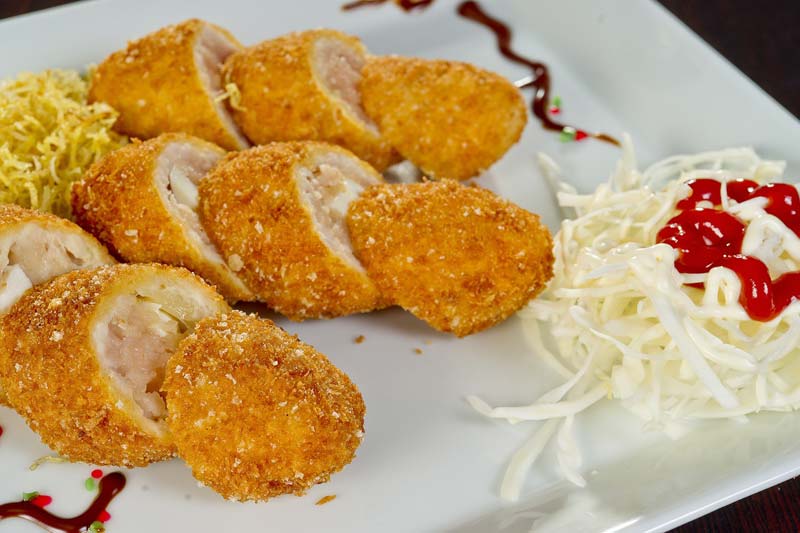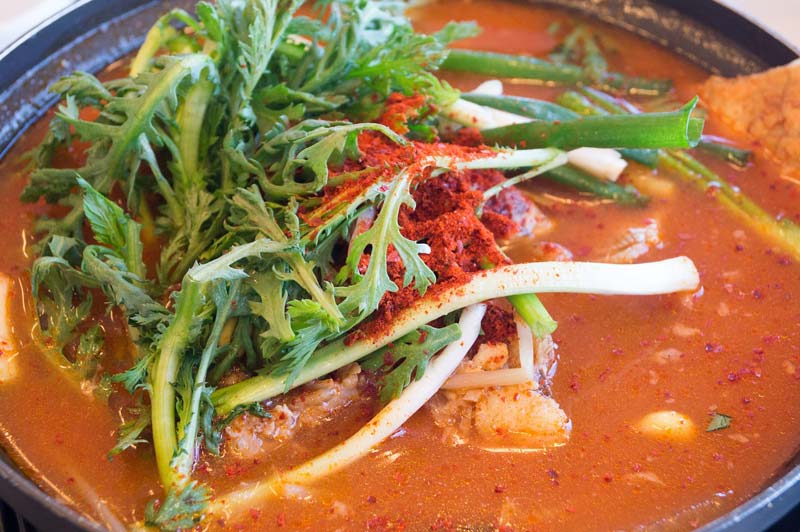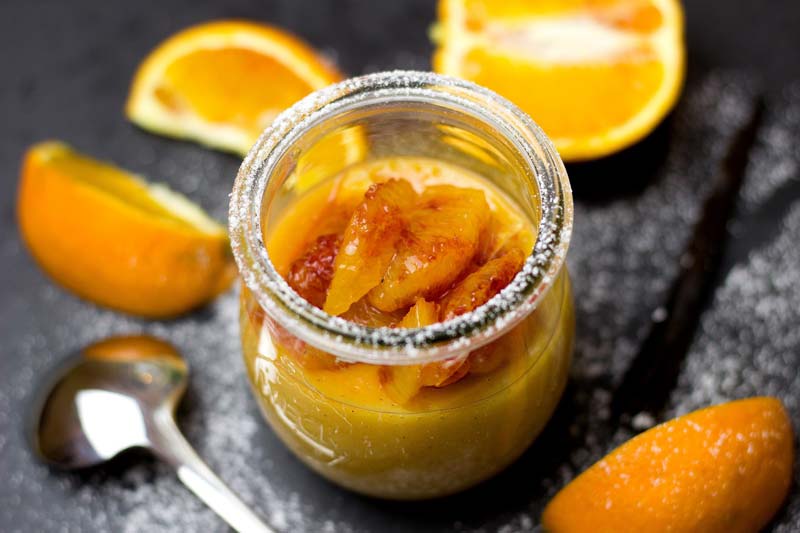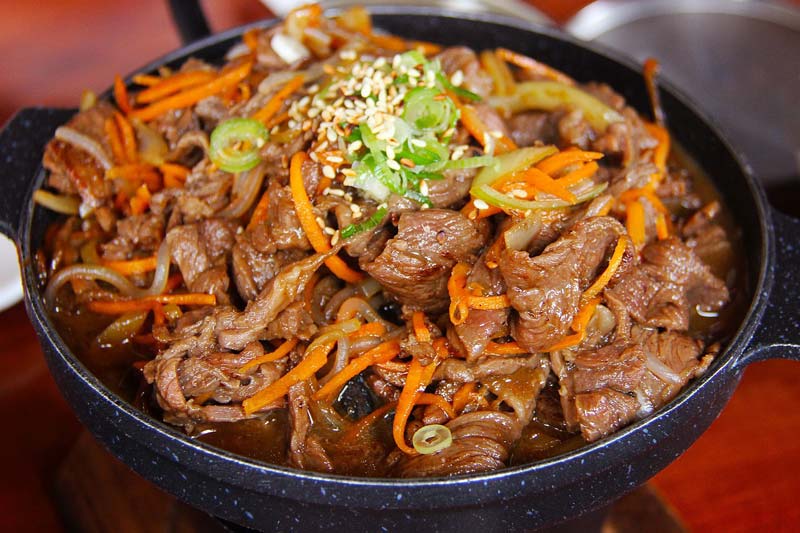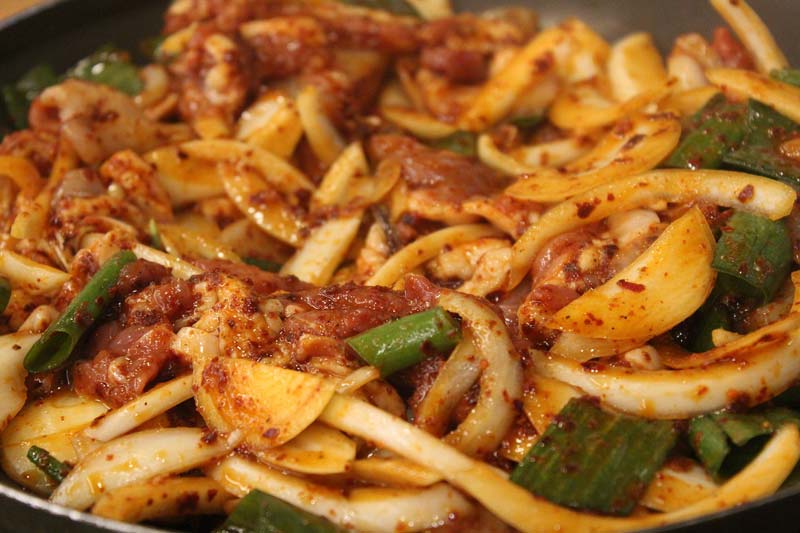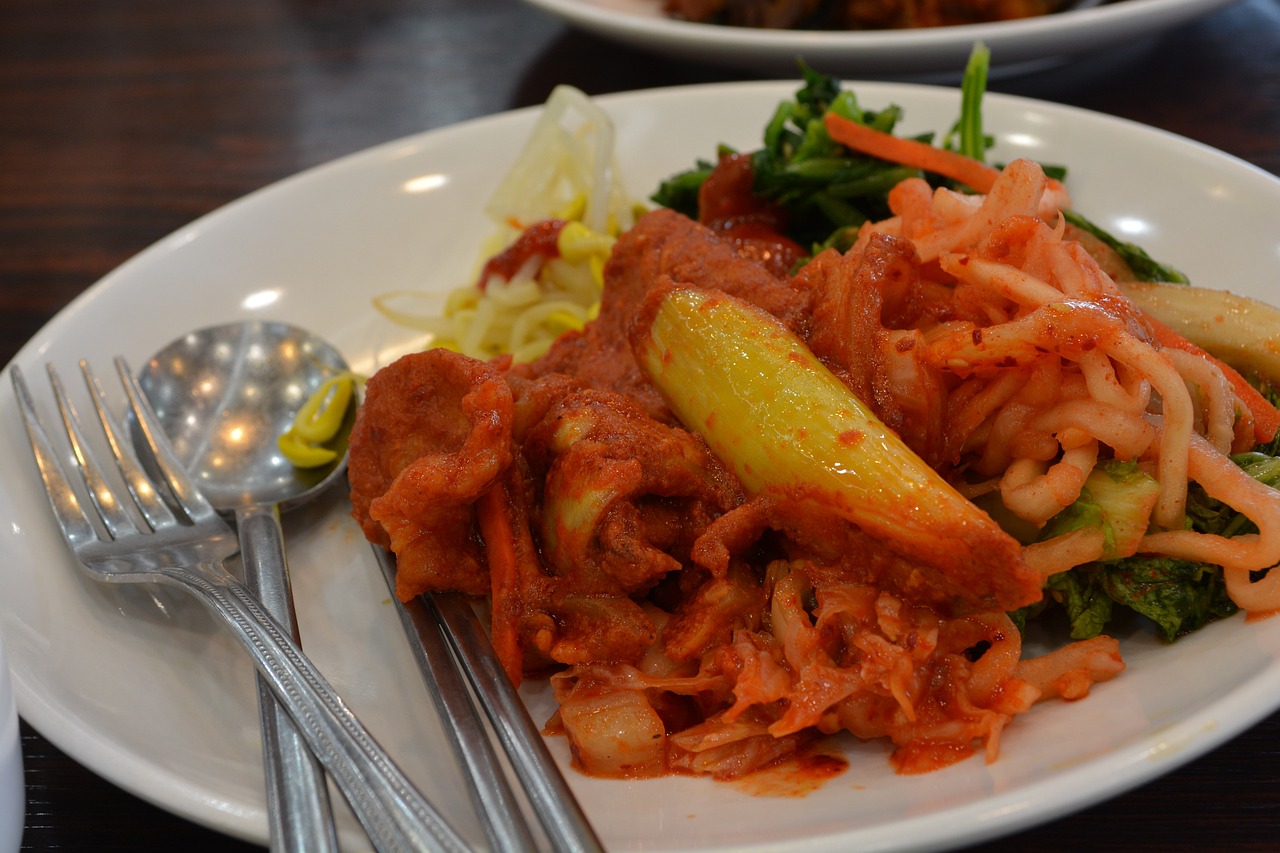Cold noodles are largely divided into Pyeongyang naengmyeon and Hamheung naengmyeon. Components of noodles have varied by region. Pyeongyang style contains much buckwheat while Hamheung style contains much starch of potato or sweet potato.
Pyeongyang naengmyeon is a watery noodle made by putting boiled noodles in iced juice of watery kimchi or seasoned broth, while Hamheung naengmyeon is a dry noodle hash prepared by mixing noodles with hot-tasting condiments and adding seasoned raw fish (skate). Both styles show different tastes.
Pyeongyang naengmyeon
Pyeongyang cold noodles had originated from the habit of eating noodles after mixing them into icy kimchi juice on a heated floor in winter. Characteristically, the food does not taste hot or salty, but has a bland taste.
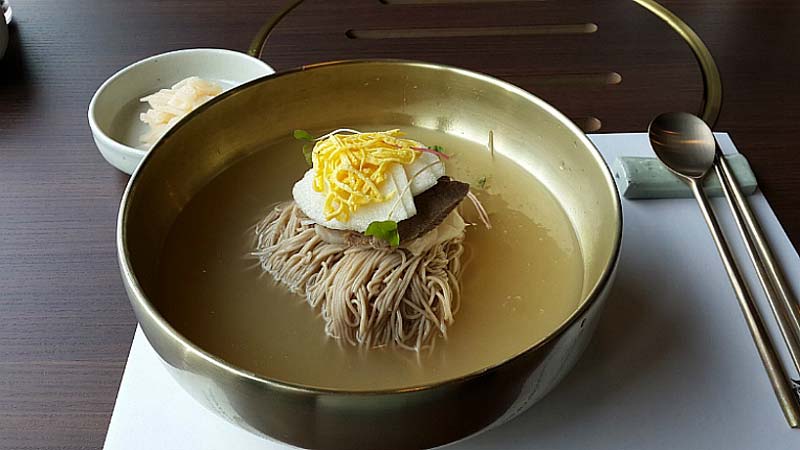
Naengmyeon. Cold nodles, wjlee4284 / wikipedia
Pyeongyang cold noodles are mainly made of buckwheat flour which is more rough, easily cut and thick, while Hamheung noodles use starch of potato.
Pyeongyang cold noodles are prepared by mixing buckwheat flour with potato starch, and kneading and pressing them hard to transform into sari (coil). They are then boiled along with beef, pork or chicken to produce broth, and finally, egg or boiled meat will be laid on top of them as garnish. Mustard juice and vinegar are served separately as condiment.
In preparing cold noodle soup, the boiled water of pheasant has been reckoned as the best, however, broth of boiled cow bones or watery kimchi juice have been generally used.
Hamheung naengmyeon
Hamheung cold noodles are characteristic in that their noodles are rigid and they taste hot (so hot as to cause tears) and strong. Hamgyeong province faces East Sea where warm and cold currents cross, so a variety of foods using fresh fish and seafood have been developed there.
Thanks to this geographical advantage, ‘Hoe naengmyeon’ (cold noodles with raw fish) and ‘Sikhye’ (a sweet drink made with fermented rice and flatfish) have become famous from the early days. This area takes pride in the thin and rigid noodles squeezed from starch of potato or sweet potato which are also their specialties.
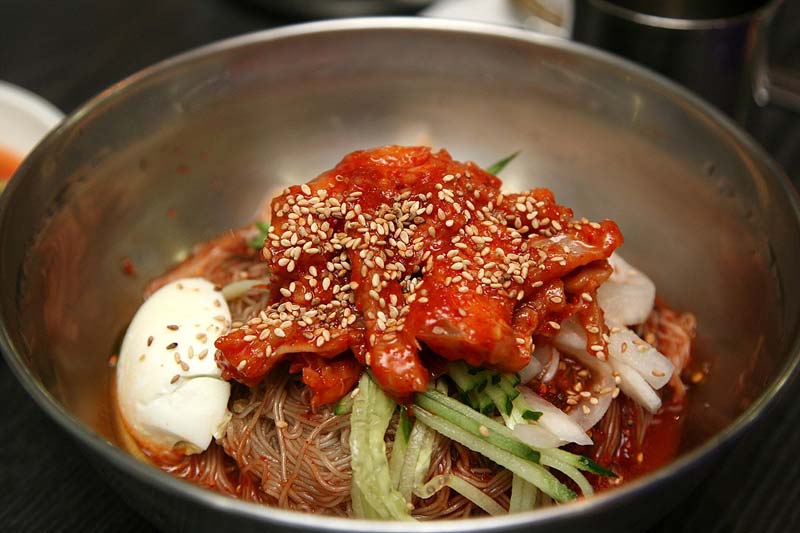
Cold buckwheat noodles with hoe fot. Jinho Jung / wikipedia, flickr
Among the kinds of Hamheung noodles, the most popular one is spicy fish noodle made with raw skate. Buckwheat noodles are mixed with raw skate, vegetables and hot seasoning. The pungent and sour taste of the noodle can be better appreciated when taken with vinegar and mustard.
‘Dongguk Sesigi’ also writes that “Buckwheat noodles mixed with pear, chestnut, slices of beef or pork, Japchae (stir-fried sweet potato noodles) and seasoned with sesame oil and soy is called ‘Goldongmyeon,” which is the same as today’s Bibim naengmyeon.
Various kinds of cold noodles
Since Pyeongyang and Hamheung cold noodles had been diffused southwards, the kinds of noodle diversified and various broths came to be used as noodle soup. Also, the garnishes to be laid above noodle became varied.
The most common method of cooking cold noodles is to make soup by boiling beef, chicken or pheasant meat, and to prepare garnish with the boiled meat slices (or stir-fried meat) and seasoned cucumber.
In the south, ‘Punggi naengmyeon’ has been famous, which was initiated by Pyeongyang citizens who fled southwards during civil war, therefore the food has same origin as Pyeongyang cold noodles.
Other famous noodles besides it are ‘Jangguk naengmyeon’ which uses cooled beef broth as noodle soup, and ‘Jinju naengmyeon’ cooked with purely buckwheat flour and without using pork.
(korfood/korfood4_2.jsp)
